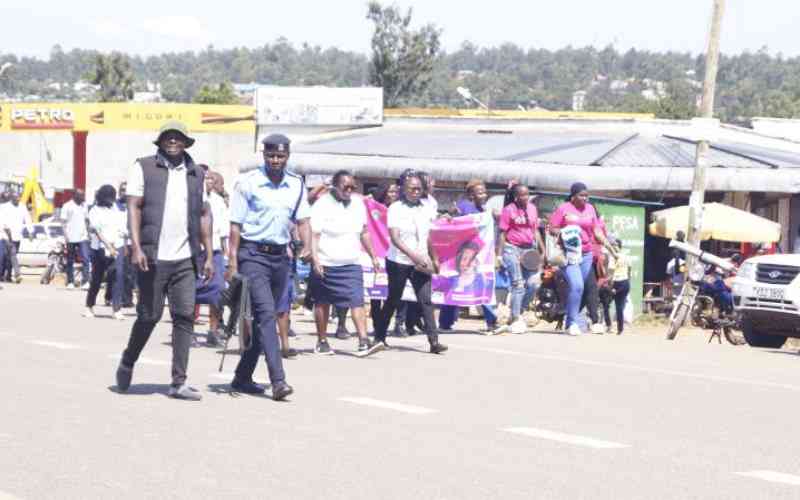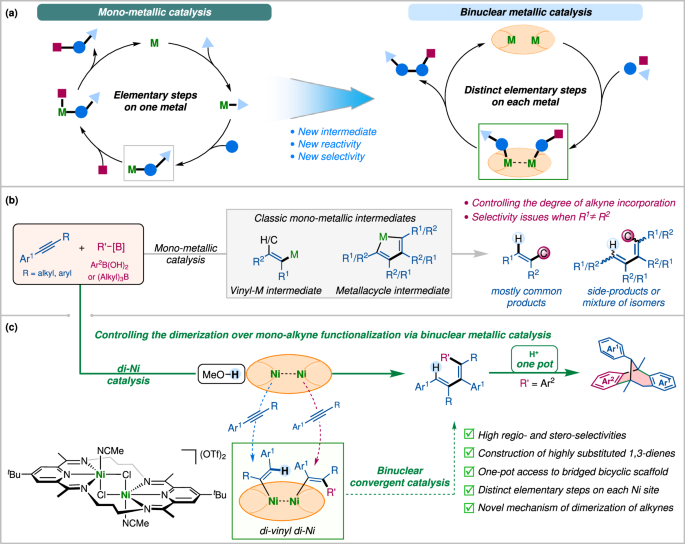Factors Influencing Compliance with Pulmonary Rehabilitation in Patients with Stable COPD: a Cross Sectional Study
Chronic obstructive pulmonary disease (COPD), is a common, preventable and treatable disease with fixed airflow limitation. It is characterized by airflow limitation and frequent respiratory symptoms.1 With the effects of smoking, aging and other chronic diseases associated with COPD (eg, cardiovascular disease and diabetes), COPD has become a major epidemic worldwide. The number of people with the disease has exceeded 250 million worldwide, and the incidence is increasing year by year and has become one of the leading causes of death among global diseases.2,3 In China, there are nearly 100 million COPD patients, with a prevalence rate of 13.7% among people over 40 years of age, making it the third leading cause of death from the disease.4 The large number of patients with COPD places a great burden on their families and public health resources. Therefore, it is urgent to improve disease management in COPD patients to reduce the high burden.
Currently, pulmonary rehabilitation (PR) is an important intervention in the non-pharmacological treatment of COPD patients, which can effectively alleviate dyspnea, improve physical function and quality of life.5 The American Thoracic Society (ATS) and the European Respiratory Society (ERS) consider PR to be a combination of interventions including, but not limited to, exercise training, education, and self-management strategies designed to improve the physical and psychological status of patients with chronic respiratory disease.6 Evidence suggests that PR is one of the most cost-effective treatments for COPD. And patients with any stage of COPD can benefit from PR, especially those with moderate-to-severe COPD.7,8 A systematic review and meta-analysis showed that PR can reduce readmission rates after exacerbation discharge, improve exercise capacity and dyspnea, and improve quality of life in COPD patients.9 A 5-year clinical trial also demonstrated that long-term maintenance PR can improve patients’ clinical symptoms and enhance 5-year survival in COPD patients.10 Meanwhile, PR also includes smoking cessation strategies, which is a crucial aspect for COPD patients. Smoking cessation is effective in improving symptoms, respiratory function and metabolic parameters in COPD patients.11 It has been shown that the outcomes that can be achieved after PR in terms of exercise tolerance and quality of life are similar for smokers and non-smokers.12
However, despite the multiple benefits of PR in promoting physical functioning and improving quality of life in patients with COPD, there are still many barriers to the implementation and conduct of PR in patients with COPD.13 A global survey showed that only 9.5% of centers offer inpatient PR programs. Another study found that 46% of patients with chronic respiratory diseases had never participated in a PR program, and 60% reported having difficulty participating in PR.14,15 In China, a study surveyed a total of 1,138 COPD patients in 13 hospitals about their knowledge of PR and found that the majority of patients were not convinced of the necessity of PR treatment, with only 24.69% of patients participating in PR programs.16 Therefore, we need to understand why patients are reluctant to participate in PR and explore ways to improve patient compliance with PR. How to enable more COPD patients to benefit from PR and increase the prevalence of PR is a current urgent issue.
This cross-sectional study was conducted from November 2022 to November 2023 at the Respiratory Department of Guang’anmen Hospital, China Academy of Chinese Medical Sciences.
The inclusion criteria included (1) Meet the diagnostic criteria of GOLD guidelines;17 (2) Male or female, age ≤85 years; (3) Patients with stable symptoms (may have had previous bronchial exacerbations) without acute exacerbation of COPD symptoms (eg, short-term aggravation of cough and sputum, and/or wheezing, increased sputum volume, purulent or mucopurulent sputum, or even inflammatory manifestations such as fever); (4) Patients who visited the Respiratory Department of Guang’anmen Hospital from November 2022 to November 2023 and with ≥4 pulmonary rehabilitation prescriptions (ie, participation in pulmonary rehabilitation of ≥1 month in length); (5) Patients with clear language expression, no communication barriers, and voluntary participation in the study. The exclusion criteria included (1) Combination of serious primary diseases or combination of active tuberculosis and other serious infectious diseases; (2) patients manifesting major psychiatric disorders or severe cognitive impairment who could not complete the questionnaires; (3) patients who are not cooperative. Exclusion criteria for the questionnaire included: (1) Questionnaires have omissions and errors; (2) Wavy or homogenous questionnaire responses.
The PR program in this study included five aspects: health education, medication guidance, exercise rehabilitation, lifestyle advice and psychological support.
Health education: the respiratory physician corrected the patient’s poor lifestyle and behavioral habits, emphasized the importance of smoking cessation, and informed the patient of the importance of taking medications correctly.
Medication guidance: the respiratory physician selected appropriate inhalation preparation according to the patient’s condition and instructed the patient to standardize the use of inhalation drug device to avoid the inability of inhalation drug to exert its efficacy and the occurrence of adverse reactions. Outpatient follow-up was conducted 1 time/month.
Exercise rehabilitation: Exercise rehabilitation in this study aimed to improve the diaphragm function of the patients. Subjects with dynamic hyperinflation could benefit from rehabilitation treatment.18 A professional exercise rehabilitator taught patients to perform exercise training for PR. The training was divided into respiratory training, upper limb/thoracic training, and lower limb training, all of which were based on traditional Chinese exercises (eg, Tai Chi Chuan). Each training session lasted approximately 60 minutes, with a frequency of 2 times/week in the hospital and the rest of the time the patient was encouraged to train daily at home.
Lifestyle advice and psychological support: the nurse told the patients to choose high-quality protein, fresh vegetables and fruits and other foods, and avoid spicy stimulation and greasy diet. For COPD patients with negative emotions such as anxiety and depression, they patiently provided psychological counseling to alleviate the patients’ uneasy psychology. Outpatient follow-up was conducted 1 time/month.
The demographic questionnaire was designed to investigate the patient’s gender, age, education level, residential status, cost-bearing mode, cost-payment pressure, COPD history, other disease status, exercise habits, willingness to accept PR, whether or not they found PR beneficial, the difficulty of PR, whether or not they had someone to supervise their PR, whether or not they had an improved quality of life, and their most recent pulmonary function report, for a total of 15 items (Appendix).
Compliance with PR was assessed by the PR Compliance Questionnaire. This questionnaire was designed by Jing Cai et al at Jilin University, China (Appendix).19 The questionnaire was divided into 4 dimensions and 20 questions. The four dimensions were medication compliance (5 items), exercise compliance (5 items), lifestyle compliance (7 items), and psychological state compliance (3 items). A five-point Likert scale was used, with 1 for never doing it (0 days per week); 2 for doing it occasionally (1–2 days per week); 3 for doing it basically (3–4 days per week); 4 for doing it often (5–6 days per week); and 5 for doing it completely (7 days per week). Average compliance scores ≥4 were identified as high compliance, 3 ≤average compliance scores <4 were identified as moderate compliance, average compliance scores <3 were identified as low compliance. The questionnaire was pilot tested and reviewed by seven professionals (three respiratory experts, three nurse experts, and one rehabilitation training expert). Cronbach’s α was 0.821, and the content validity was 0.90.
The UK Medical Research Council dyspnea scale (mMRC) was used to assess the degree of dyspnea in patients with stable COPD. mMRC grade 0 was defined as mild dyspnea; grade 1 was defined as moderate, while grade 2–4 was defined as severe dyspnea.
The Self-efficacy for Managing Chronic Disease 6-Item Scale (SES6G) was developed by Stanford University. The scale consists of 6 items, including both symptom management self-efficacy and disease co-management self-efficacy. Patients select a number from 1 to 10 to demonstrate their confidence in their disease, with higher numbers indicating greater confidence. The mean score of the six items represents the level of self-efficacy, with <5 indicated as a low level, 5−7 as a moderate level, and ≥7 as a high level (Appendix).
The Family Support Scale (PSS-Fa) was designed by Procidano and Heller, USA. The scale scores 11–15 were identified as a high level of family support, 6–10 were identified as a moderate level of family support, and 0–5 were identified as a low level of family support (Appendix).
Convenience sampling method was used for sampling. The researchers explained the study protocol and obtained informed consent from patients with stable COPD who had participated in PR ≥4 times (duration ≥ 1 month). An on-site questionnaire was conducted for patients who met the inclusion criteria, and an anonymous survey was used to protect patient privacy. Questionnaires were individually distributed and collected. All collected questionnaires were strictly screened by two researchers to exclude incomplete data completion questionnaires.
SPSS 26.0 software was used for data analysis. Count data were expressed as counts and percentages (%), and measured data were expressed as mean ± standard deviation (Mean ± SD) when they were normally distributed. Comparisons between the two groups were made by t-test, and comparisons between three or more groups were made by ANOVA. Univariate analysis and multiple linear regression analysis were used to analyze factors affecting compliance with PR. Significance was set at P <0.05. In the multiple linear regression analysis, the independent variable consisted of the significance factors from the univariate analysis, and the dependent variable was compliance with PR in patients with stable COPD.
All participating researchers were rigorously trained and followed standard operating practices in completing the questionnaires. Each questionnaire was coded before analysis. Data from the questionnaires were entered into an Excel sheet by two researchers and double-checked for accuracy. Data cleaning was done by two researchers. Questionnaires with missing values, homogeneous and wavy responses were deleted.
This study was approved by the Guang’anmen Hospital Ethics Committee (Research Ethics 2022–111-KY) and strictly adhered to the research ethics specifications in the Declaration of Helsinki.
In our study, 107 patients were given questionnaires. We explained the meaning of each entry to the patients while distributing the questionnaire and the patients filled the questionnaire by themselves. One hundred patients filled out the questionnaires completely-correctly and brought them back, with an effective return rate of 93.5%. A total of 100 stable COPD patients’ data were included in this study for assessing the influencing factors affecting adherence to PR. The demographic and clinical characteristics of the patients are shown in Table 1.
 | The PR Compliance Score Across Social Demographic Variables (N = 100) |
The overall score of the PR compliance questionnaire in 100 patients was 3.51 ± 0.65, which was at a moderate level. Among the four dimensions, medication compliance was the best with a score of 4.10 ± 0.86, exercise compliance was the lowest with a score of 3.03 ± 1.16, lifestyle compliance was 3.61 ± 0.89, and mental status compliance was 3.03 ± 0.66 (Table 2). Overall compliance was good in 26 (26%), moderate in 55 (55%) and poor in 19 (19%), the compliance of the dimensions is shown in Figure 1.
 | Dimensions of Compliance in PR, SES6G and PSS-Fa |
 | Compliance numbers for each dimension of PR. |
Regarding the mMRC dyspnea score, there were 25 cases (25%) with mild dyspnea, 63 cases (63%) with moderate dyspnea, and 12 cases (12%) with severe dyspnea (Table 1). The SES6G scale score was 6.80 ± 1.22, with 59 patients at a high level of self-efficacy (59%) and 5 at a low level (5%). The PSS-Fa scale score was 10.73 ± 2.34, with 95 (95%) having a moderate to good level of family support, and 5 (5%) having a low level of family support (Tables 1 and 2).
Univariate analysis showed that compliance with PR was associated with patients’ gender (P = 0.029), educational level (P = 0.021), exercise habits (P < 0.01), willingness to PR (P < 0.01), difficulty of PR (P = 0.030), mMRC scores (P = 0.002), and SES6G scores (P = 0.002). But not with age, lifestyle, payment method, COPD history, GOLD Classification, Cost burden, Quality of life improvement, PR is supervised and PSS-Fa scores (P > 0.05) (Table 1).
The following equation represents the multiple linear regression model: PR compliance = 0.235 × exercise habits + 0.609 × willingness to PR + 0.325 × difficulty of PR (P < 0.0001), adjusted R2 = 0.330, F = 7.974 and Durbin–Watson ratio = 2.049. Patients’ good exercise habits in regular life, stronger willingness to PR, and easier PR programs may contribute to improved PR compliance. Moreover, willingness to PR showed the highest impact on compliance with PR (Beta = 0.271) (Table 3).
 | Multiple Linear Regression Analysis of Factors Associated with PR Compliance |
This study investigated the current status of PR for COPD in a hospital in Beijing, China, and explored the related factors affecting the compliance of PR from a multidimensional perspective. The results showed that the overall compliance with PR in patients with stable COPD was moderate. Specifically, medication adherence was the highest, and exercise adherence was the worst. Twenty-six percent of patients had good adherence to PR, 55% had moderate adherence, and 19% had low adherence. It is in general agreement with the Cochrane Database of in-person PR completion rates for chronic respiratory diseases.20
The results of the present study showed that there was a higher percentage of females than males among the included COPD patients, which differed from the results of previous studies.21 This may be related to the fact that the place of investigation is in Beijing, China. The female COPD patients who participated in the survey all lived in the city and had a stable income after retirement. And the vast majority of the patients had an education level of high school or above. Instead of being traditional Chinese women’s roles such as cooking, taking care of grandchildren and house cleaning, they have more time to participate in PR and are more aware of the physical benefits of PR. This study showed that more than one-third of the patients suffered from COPD for more than 5 years, and the long-term disease caused serious physical and psychological disturbances to COPD patients. It has been shown that COPD patients are at risk for mental disorders, such as anxiety and depression, and such mental disorders can negatively affect patients’ disease treatment and rehabilitation.22 Therefore, it is particularly important to provide psychological interventions for patients during PR.
The patient’s willingness to PR and the difficulty of PR can affect the compliance. In this study, over 90% of COPD patients were willing to try PR, and patients with positive attitudes toward PR had better compliance than those who felt uncertain about PR. Pacheco et al’s study similarly emphasized patients’ personal motivation is the main reason for PR dropout.23 With the majority of patients willing to participate in PR, a qualitative study suggests that poor follow-up of patients by medical staff, inadequate referral rates, and distance between patients and PR centers can lead to decreased adherence to PR.24 Developing a training program of appropriate difficulty is important for PR compliance. Geriatric syndromes with sarcopenia and frailty symptoms are often seen in patients with COPD.25 Thus, exercise programs for COPD patients need to be unique from those for other chronic diseases. Too difficult exercise training can affect the patient’s self-confidence in completing the movements and weakening the PR compliance.
The habit of exercise is another factor that affects the compliance of PR. Our study found that PR compliance was higher in patients who have a regular exercise habit in their spare time. Patients with COPD have been reported to be less physically active than patients with other chronic diseases (eg diabetes or rheumatoid arthritis) matched to their age-gender.26,27 This is due to the fact that COPD is associated with symptoms such as dyspnea, fatigue, and skeletal muscle dysfunction, which reduces the patient’s ability to exercise.28 A research study in Finland showed that 50% of COPD patients do not have an exercise routine. Moreover, the percentage of patients who do not exercise increases as the disease progresses.29 Many patients will be afraid to exercise because of dyspnea symptoms. Or symptoms such as anxiety and depression during the long-term course of the disease lead to a worse emotional state, which makes the patient reluctant to exercise.30 Consequently, healthcare workers need to focus on educating COPD patients. Telling patients that the disease is not an obstacle to exercise and eliminating the fear of exercise can lead to better compliance with the PR program.
The mMRC dyspnea score reflects the degree of dyspnea in COPD patients. In this study, we showed that PR compliance was higher in mild-to-moderate patients than in severe patients, consistent with previous studies.21,31 Patients’ physical activity levels are significantly reduced when mMRC is ≥2.32 In addition, mMRC ≥2 is considered to be associated with anxiety and depression.33 COPD patients are prone to poor psychological status due to long-term symptoms, which affects interest in PR. Therefore, it is necessary to assess mMRC before PR, pay attention to patients’ psychology, and develop individualized protocols to improve adherence.
Self-efficacy, defined as the confidence to act in a certain behavior in order to achieve a specific goal, has been increasingly recognized as an essential prerequisite of effective self-management of chronic diseases.34 The SES6G is commonly used to assess patients’ self-efficacy in managing chronic diseases. In our study, nearly 60% of the patients had a good level of self-efficacy. The self-efficacy level of patients with COPD is one of the statistically significant factors on PR compliance. Andenaes et al equally concluded that self-efficacy in COPD patients is directly related to improving patients’ quality of life and physical activity and is a factor that should be taken into account by PR.35 Current research suggested that self-efficacy is highly correlated with the severity of dyspnea, the number of disease exacerbations, the degree of physical activity limitation, the degree of anxiety and depression, and the surrounding living environment of the COPD patients.36–39 Improving compliance with PR requires the selection of appropriate medication options for patients to alleviate symptoms of dyspnea and reduce hospitalizations. It also requires the involvement of psychologists to assess the patient’s psychological state and intervene in a timely manner. In addition, focusing on the involvement of the patient’s family and friends in PR is also a necessary way to improve the compliance.
In summary, despite guideline recommendations, our study found that PR is carried out with inadequate compliance. Among the four dimensions of PR, medication compliance was the best while exercise compliance was the worst. This indicates that most Chinese patients’ attitudes toward COPD are still dominated by reliance on medication. Among all the parameters included in this study, gender, education level, exercise habits, willingness to PR, difficulty of PR, mMRC and SES6GG were significantly associated with PR compliance. Then, the model was established by multiple linear regression: PR compliance = 0.235 × exercise habits + 0.609 × willingness to PR + 0.325 × difficulty of PR. Patients with better exercise habits, greater willingness to PR, and easier PR programs contribute to improving PR compliance. While the relationships behind these parameters need to be further explored, the formula presented by us might be able to help clinicians assess appropriate PR regimens for COPD patients, thereby enabling a higher compliance with PR.
There were some limitations of this study. First, this study selected only stable COPD patients from a single center to investigate the current status of their compliance with PR, which was a small sample size and obtained limited information. Future studies should recruit more participants with more diverse geographic and economic characteristics. Second, this was a cross-sectional study, and further randomized controlled trials should be available to confirm the exact factors affecting the compliance with PR. Finally, there is still no generalized scale or assessment tool to evaluate PR compliance, which is a gap that needs to be filled by future research.
Our study investigated patient compliance with PR from multiple dimensions and found that patients had poor perceptions of exercise to improve COPD. The compliance of PR is affected by many factors. COPD patients with better exercise habits, stronger willingness to PR and lower difficulty of PR are helpful to improve PR compliance. The results of this study provide a foundation for further development of appropriate PR programs and improved PR compliance.
COPD, Chronic obstructive pulmonary disease; PR: pulmonary rehabilitation; GOLD, Global Initiative Chronic Obstructive Lung Disease; ATS, American Thoracic Society; ERS, European Respiratory Society; mMRC, modified Medical Research Council; SES6G, Self-efficacy for Managing Chronic Disease 6-Item Scale; PSS-Fa, Family Support Scale; VO2, Vital Oxygen.
The datasets used and/or analyzed during the current study are available from the corresponding author upon reasonable request.
The Ethics Committee of Guang’anmen Hospital, China Academy of Chinese Medical Sciences, reviewed and approved this study (2022-111-KY). All patients who volunteered to participate in this study obtained written informed consent and consented to the publication of identifying images in an online open-access publication.
Written informed consent for the publication of study data was obtained from all participants.
All authors made a significant contribution to the work reported, whether that is in the conception, study design, execution, acquisition of data, analysis and interpretation, or in all these areas; took part in drafting, revising or critically reviewing the article; gave final approval of the version to be published; have agreed on the journal to which the article has been submitted; and agree to be accountable for all aspects of the work.
This work was supported by the Scientific and Technological Innovation Project of the China Academy of Chinese Medical Sciences (CI2021A01110).
The authors have no conflicts of interest to declare for this work.
1. Duffy SP, Gj C. Chronic obstructive pulmonary disease: evaluation and management. Med Clin North Am. 2019;103(3):453–461. doi:10.1016/j.mcna.2018.12.005
2. Iheanacho I, Zhang S, King D, et al. Economic burden of chronic obstructive pulmonary disease (COPD): a systematic literature review. Int J Chron Obstruct Pulmon Dis. 2020;15(439–60):439–460. doi:10.2147/COPD.S234942
3. Pj B. Inflammatory mechanisms in patients with chronic obstructive pulmonary disease. Allergy Clin Immunol. 2016;138(1):16–27.
4. Wang C, Xu J, Yang L, et al. Prevalence and risk factors of chronic obstructive pulmonary disease in China (the China pulmonary health [CPH] study): a national cross-sectional study. Lancet. 2018;391(10131):1706–1717. doi:10.1016/S0140-6736(18)30841-9
5. Agustí A, R CB, J CG, et al. Global initiative for chronic obstructive lung disease 2023 report: GO. Europ resp J. 2023;61(4):2300239. doi:10.1183/13993003.00239-2023
6. Spruit MA, Singh SJ, Garvey C, et al. An official American Thoracic Society/European Respiratory Society statement: key concepts and advances in pulmonary rehabilitation [published correction appears in Am. J Respir Crit Care Med. 189;12:1570.
7. Rochester CL, Vogiatzis I, Holland AE, et al. An Official American Thoracic Society/European Respiratory Society Policy Statement: enhancing Implementation, use, and delivery of pulmonary rehabilitation. Am J Respir Crit Care Med. 2015;192(11):1373–1386. doi:10.1164/rccm.201510-1966ST
8. Kenn K, Gloeckl R, Soennichsen A, et al. Predictors of success for pulmonary rehabilitation in patients awaiting lung transplantation. Transplantation. 2015;99(5):1072–1077. doi:10.1097/TP.0000000000000472
9. R JA, Burtin C, G CP, et al. Do pulmonary rehabilitation programmes improve outcomes in patients wi th COPD posthospital discharge for exacerbation: a systematic review a nd meta-analysis. Thorax. 2024;79(5):438–447. doi:10.1136/thorax-2023-220333
10. Blervaque L, Préfaut C, Forthin H, et al. Efficacy of a long-term pulmonary rehabilitation maintenance program f or COPD patients in a real-life setting: a 5-year cohort study. Respir Res. 22(1):79. doi:10.1186/s12931-021-01674-3
11. Pezzuto A, Ricci A, D’ASCANIO M, et al. Short-term benefits of smoking cessation improve respiratory function and metabolism in smokers. Int J Chronic Obstr. 2023;18:2861–2865. doi:10.2147/COPD.S423148
12. Hill K, Vogiatzis I, Burtin C. The importance of components of pulmonary rehabilitation, other than exercise training, in COPD. Eur Respir Rev. 2013;22(129):405–413. doi:10.1183/09059180.00002913
13. Sami R, Salehi K, Hashemi M, et al. Exploring the barriers to pulmonary rehabilitation for patients with chronic obstructive pulmonary disease: a qualitative study. BMC Health Serv Res. 2021;21(1):828. doi:10.1186/s12913-021-06814-5
14. Spruit MA, Pitta F, Garvey C, et al. Differences in content and organisational aspects of pulmonary rehabilitation programmes. Europ resp J. 2014;43(5):1326–1337. doi:10.1183/09031936.00145613
15. L RC, Vogiatzis I, Powell P, et al. Patients’ perspective on pulmonary rehabilitation: experiences of European and American individuals with chronic respiratory disease. ERJ Open Res. 2018;4(4):00085–2018. doi:10.1183/23120541.00085-2018
16. Xie L, Liu Z, Hao S, et al. Assessment of knowledge, attitude, and practice towards pulmonary rehabilitation among COPD patients: a multicenter and cross-sectional survey in China. Respir Med. 2020;174(106198). doi:10.1016/j.rmed.2020.106198.
17. Global strategy for the diagnosis, management and prevention of chronic obstructive pulmonary disease 2022 report. [EB/OL]. (2021). Available from:https://goldcopdorg/gold-reports/. Accessed March 27, 2025.
18. D’ascanio M, Viccaro F, Calabro N, et al. Assessing static lung hyperinflation by whole-body plethysmography, helium dilution, and Impulse Oscillometry System (IOS) in Patients with COPD. Int J Chron Obstruct Pulmon Dis. 2020;15:2583–2589. doi:10.2147/COPD.S264261
19. Cai J. Analysis of adherence to home-based pulmonary rehabilitation and factors affecting it in patients with stable COPD. UNIVERSITY J. 2021.
20. S CN, Dal corso S, Hansen H, et al. Telerehabilitation for chronic respiratory disease. Cochrane Database Syst Rev. 2021;1(1):CD013040. doi:10.1002/14651858.CD013040.pub2
21. Thorpe O, Kumar S, Johnston K. Barriers to and enablers of physical activity in patients with COPD fo llowing a hospital admission: a qualitative study. Int J Chronic Obstr. 2014;9:115–128. doi:10.2147/COPD.S54457
22. Wrzeciono A, Czech O, Buchta K, et al. Assessment of stress, depressive and anxiety symptoms in patients with COPD during in-hospital pulmonary rehabilitation: an observational co hort study. Medicina. 2021;57(3):197. doi:10.3390/medicina57030197
23. Almadana Pacheco V, Pavón Masa M, Fernández A P G-B, et al. Patient profile of drop-outs from a pulmonary rehabilitation program. Arch Bronconeumol. 2017;53(5):257–262. doi:10.1016/j.arbres.2016.06.010
24. N SD, Kaur H, Roy S, et al. Needs assessment for introducing pulmonary rehabilitation for chronic obstructive pulmonary disease management in a rural Indian setting: a qualitative study. BMJ Open Respir Res. 2023;10(1):e001696. doi:10.1136/bmjresp-2023-001696
25. E BA, Hepgul N, Kon S, et al. Sarcopenia and frailty in chronic respiratory disease. Chron Respir Dis. 2017;14(1):85–99. doi:10.1177/1479972316679664
26. Arne M, Janson C, Janson S, et al. Physical activity and quality of life in subjects with chronic disease: chronic obstructive pulmonary disease compared with rheumatoid arthr itis and diabetes mellitus. Scand J Prim Health Care. 2009;27(3):141–147. doi:10.1080/02813430902808643
27. Troosters T, Sciurba F, Battaglia S, et al. Physical inactivity in patients with COPD, a controlled multi-center p ilot-study. Respir Med. 2010;104(7):1005–1011. doi:10.1016/j.rmed.2010.01.012
28. Zeng Y, Jiang F, Chen Y, et al. Exercise assessments and trainings of pulmonary rehabilitation in COPD: a literature review. Int J Chronic Obstr. 13(2013–23).
29. Katajisto M, Kupiainen H, Rantanen P, et al. Physical inactivity in COPD and increased patient perception of dyspne a. Int J Chronic Obstr. 2012;7(743–55):743–755. doi:10.2147/COPD.S35497
30. Pierobon A, Sini Bottelli E, Ranzini L, et al. COPD patients’ self-reported adherence, psychosocial factors and mild cognitive impairment in pulmonary rehabilitation. Int J Chronic Obstr. 2017;12(2059–67):2059–2067. doi:10.2147/COPD.S133586
31. Xia J, Yang J, Yang X, et al. Barriers and facilitators to exercise compliance for community elders with COPD: a cross-sectional study. Int J Chronic Obstr. 18(1965–74).
32. Hayata A, Minakata Y, Matsunaga K, et al. Differences in physical activity according to mMRC grade in patients w ith COPD. Int J Chronic Obstr. 2016;11(2203–8):2203–2208. doi:10.2147/COPD.S109694
33. Currow DC, Chang S, Reddel HK. Breathlessness, anxiety, depression, and function-the BAD-F study: a C ross-sectional and population prevalence study in adults. J Pain Symptom Manage. 2020;59(2):197–205.e2. doi:10.1016/j.jpainsymman.2019.09.021
34. Freund T, Gensichen J, Goetz K, et al. Evaluating self-efficacy for managing chronic disease: psychometric pr operties of the six-item self-efficacy scale in Germany. J Eval Clin Pract. 2013;19(1):39–43. doi:10.1111/j.1365-2753.2011.01764.x
35. Andenæs R, Bentsen SB, Hvinden K, et al. The relationships of self-efficacy, physical activity, and paid work to health-related quality of life among patients with chronic obstructive pulmonary disease (COPD). J Multidiscip Healthc. 2014;6(7):239–247.
36. Selzler A-M, Habash R, Robson L, et al. Self-efficacy and health-related quality of life in chronic obstructiv e pulmonary disease: a meta-analysis. Patient Educ Couns. 2020;103(4):682–692. doi:10.1016/j.pec.2019.12.003
37. Tsiligianni I, Sifaki-Pistolla D, Gergianaki I, et al. Associations of sense of coherence and self-efficacy with health statu s and disease severity in COPD. NPJ Prim Care Respir Med. 2020;30(1):27. doi:10.1038/s41533-020-0183-1
38. The impact of depression and exercise self-efficacy on benefits of pulmonary rehabilitation in veterans with COPD. Behav Med. 2023;49(1):72–82. doi:10.1080/08964289.2021.1983755
39. Ng WI, Smith GD. Effects of a self-management education program on self-efficacy in pat ients with COPD: a mixed-methods sequential explanatory designed study. Int J Chronic Obstr. 2017;12(2129–39):2129–2139. doi:10.2147/COPD.S136216










